Introduction
The development of the AI app seems a little bit tricky, right?
You’ve got this brilliant idea. Perhaps this is a chatbot that really understands the reference. Or an app that can analyze images in real time.
But then reality hits. You need servers. Databases. Authentication systems. APIs. The list goes on.
Here’s the matter: You no longer need to make all those backends anymore.
And here backend as a service (BaaS). Think of it as superheroes behind your app. It handles all complex server accessories when you focus on shining your AI features.
No more sleep causes the database to crash, or worry about the server crash.
Number one tells an exciting story.
The price of the backend as a service (BaaS) market is USD 27.56 billion in 2024. This is estimated to increase from USD 31.35 billion in 2025 to USD 100.23 billion by 2034.
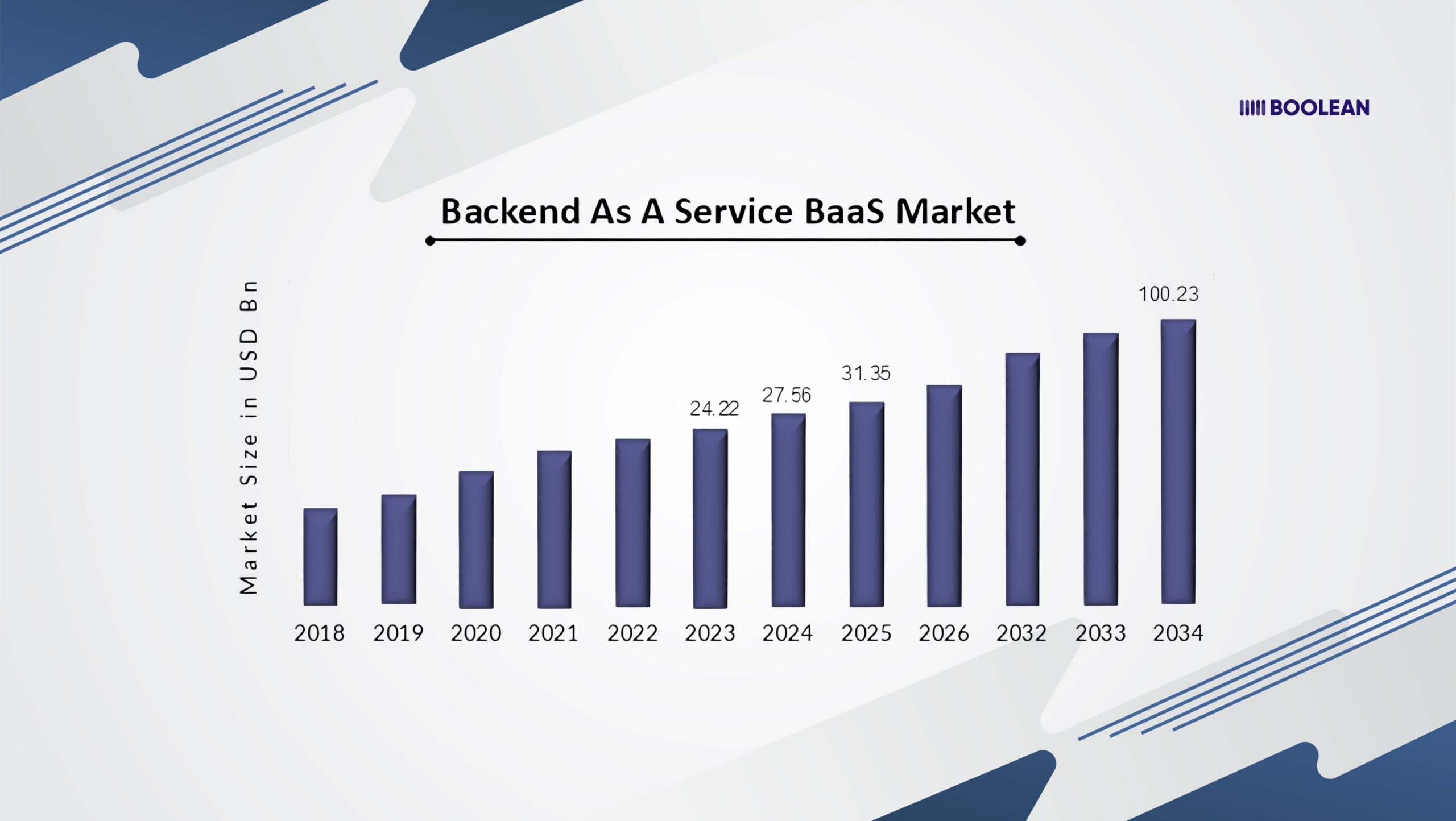
It is a mixed annual growth rate (CAGR) of 13.78% during the previous period (2025 – 2034).
Why such explosive growth? Simple. AI apps require massive computing power, real-time data processing, and rock-solid infrastructure.
Building this from scratch? That’s months of work and thousands of dollars.
BaaS providers saw this problem and said, “We got you.”
They offer pre-built backend services specifically optimized for AI workloads.
Vector databases for your embeddings. GPU support for model inference. Automatic scaling when your app goes viral. All available with just a few clicks or lines of code.
But here’s where it gets tricky.
Not all Backend as a Service (BaaS) platforms are created equal. Some excel at handling AI workloads. Others… not so much.
Choosing the wrong one could mean slow response times, unexpected costs, or worse, your app crashing when users need it most.
That’s exactly why you’re here, right?
You need to know which BaaS options will actually support your AI ambitions in 2025. Which ones offer the features you need without breaking the bank? Which ones will grow with you as your user base explodes?
Let’s dive in and find the perfect backend partner for your AI-powered app.
What is Backend as a Service (BaaS)?
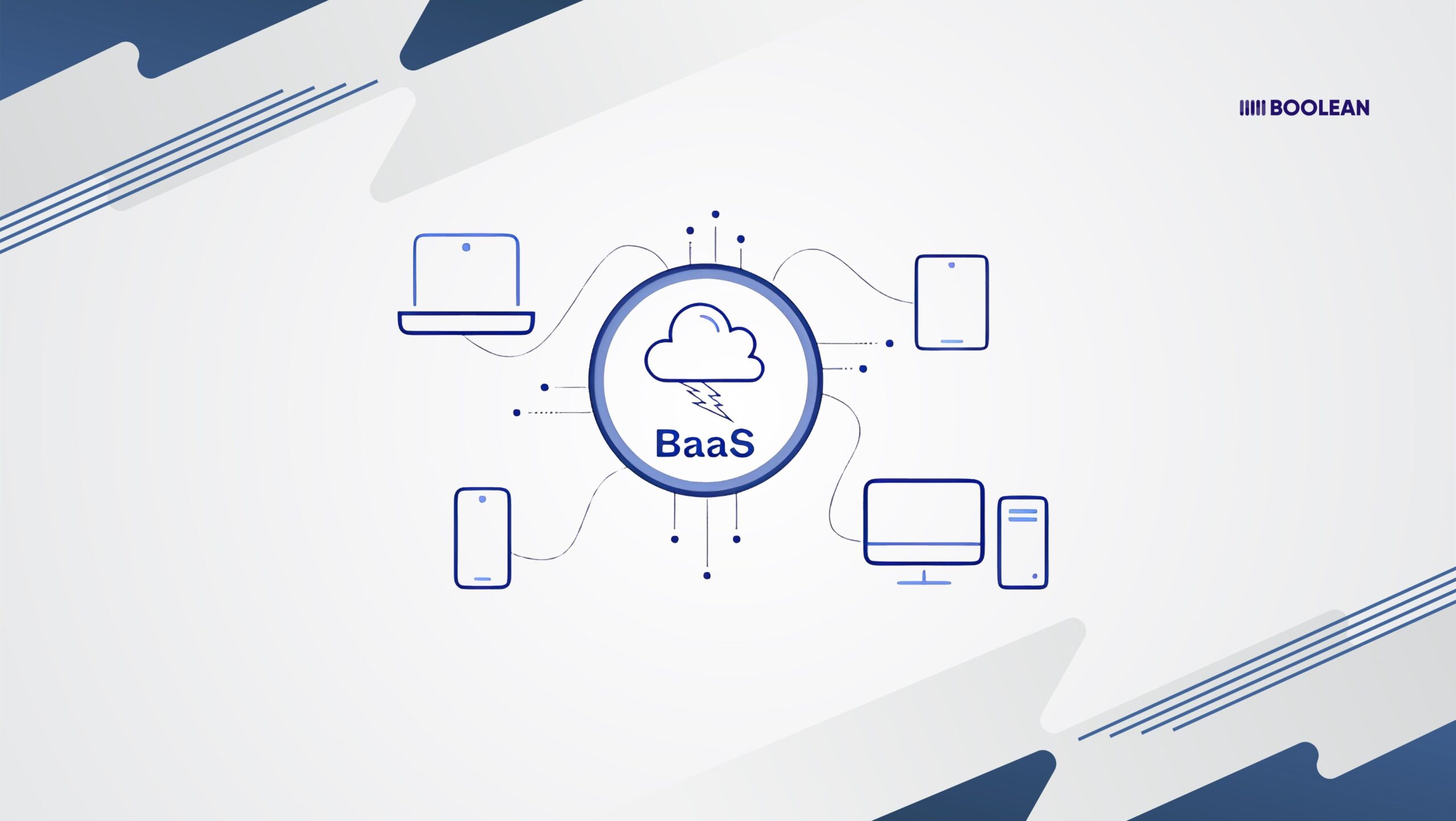
Let me paint a picture.
Lastly, remember when you tried to assemble furniture? All these pieces were scattered around you. Instructions that made no sense. Hours of frustration.
Now imagine if someone delivered that same furniture fully assembled, ready to use.
That’s backend as a service (BaaS) for your app.
Backend-as-a-Service is like a team of expert developers to build and maintain all server-side components of your application.
But here is the kicker: you do not really work for anyone. You just plug into their ready-made services.
Think about what typically goes into an app’s backend.
- Databases to store user information.
- Authentication to keep accounts secure.
- File storage for images and documents.
- Push notifications to engage users.
- API management to handle requests.
The list is exhausting.
The BaaS provider bundles all these services in a clean package.
Here is how it works in behavior. Instead of spending a week setting up a database, you just join one that is already running.
Need user authentication? It is there, waiting.
Want to store files? Just upload them. Everything is pre-configured and customized.
Magic is through the SDK and API. You write a few lines of code in your app. They connect the lines to the BaaS provider’s servers.
Suddenly, your app has professional-grade backend capabilities. No server management. No infrastructure headaches.
For AI-powered apps, this becomes even more crucial.
AI models are resource-intensive. They need specialized databases for vector embeddings. They require powerful computing for real-time inference. They demand robust CI/CD pipelines. Building this infrastructure yourself? That’s a full-time job for an entire team.
BaaS providers handle the heavy lifting. They manage the servers. They ensure uptime. They scale resources automatically when your app gets popular. You focus on perfecting your AI features and user experience.
The best part? You only pay for what you use. No massive upfront infrastructure costs. No paying for idle servers.
Does your app use more resources? The BaaS scales up. Traffic drops? It scales down. Your costs follow your actual usage.
But it’s not just about convenience and cost.
BaaS providers invest millions in security, compliance, and performance optimization. They have teams dedicated to keeping everything running smoothly.
You get enterprise-level infrastructure without the enterprise-level complexity.
A weekend project can scale to millions of users without rewriting the backend.
Also Read: The Complete App Development Guide: From Idea to Launch
Difference between BaaS vs PaaS vs Custom Backend
Confused about BaaS, PaaS, and custom backends? You’re not alone.
Let’s break it down with a simple analogy. Imagine you’re opening a restaurant.
- Custom Backend is like building everything from scratch. You construct the building. Install the kitchen. Wire the electricity. Total control, but it takes forever and costs a fortune. In app terms? You manage servers, write all backend code, handle security, and everything.
- PaaS (Platform-as-a-Service) is like renting a commercial kitchen. The basic infrastructure is there: stoves, fridges, utilities. But you still need to hire chefs, create recipes, and manage operations. For apps, PaaS gives you the computing platform, frameworks, and development tools. You still code your backend logic.
- Backend as a Service (BaaS) is like a ghost kitchen with a full staff. Everything’s ready. The kitchen, the chefs, even some signature dishes. You just customize the menu and serve customers. In the app world? Pre-built features like authentication, databases, and APIs are ready to use immediately.
Here’s the key difference that matters for AI apps:
- With custom backends, you’re writing code to handle user authentication, database connections, file uploads, everything. Months of work before you even touch your AI features.
- PaaS speeds things up. You get deployment tools and managed infrastructure. But you’re still coding backend logic. Still figuring out how to optimize for AI workloads.
- BaaS? It’s plug-and-play. User auth? One line of code. Database? Already optimized for AI data structures. File storage? Built-in with CDN support.
The trade-offs are real, though.
- Custom backends offer ultimate flexibility. Need something unique? Build it exactly how you want. But it’s expensive and time-consuming.
- PaaS balances control with convenience. Great for teams with backend expertise who want infrastructure handled. Still requires significant development time.
- BaaS trades some flexibility for incredible speed. Perfect when you want to validate an AI idea quickly. Less ideal if you need highly specialized backend behavior.
For most AI startups and solo developers? BaaS wins. You can launch in days, not months.
Focus on what makes your AI special, not reinventing the backend wheel.
Key Features to Look for in a BaaS for AI Apps
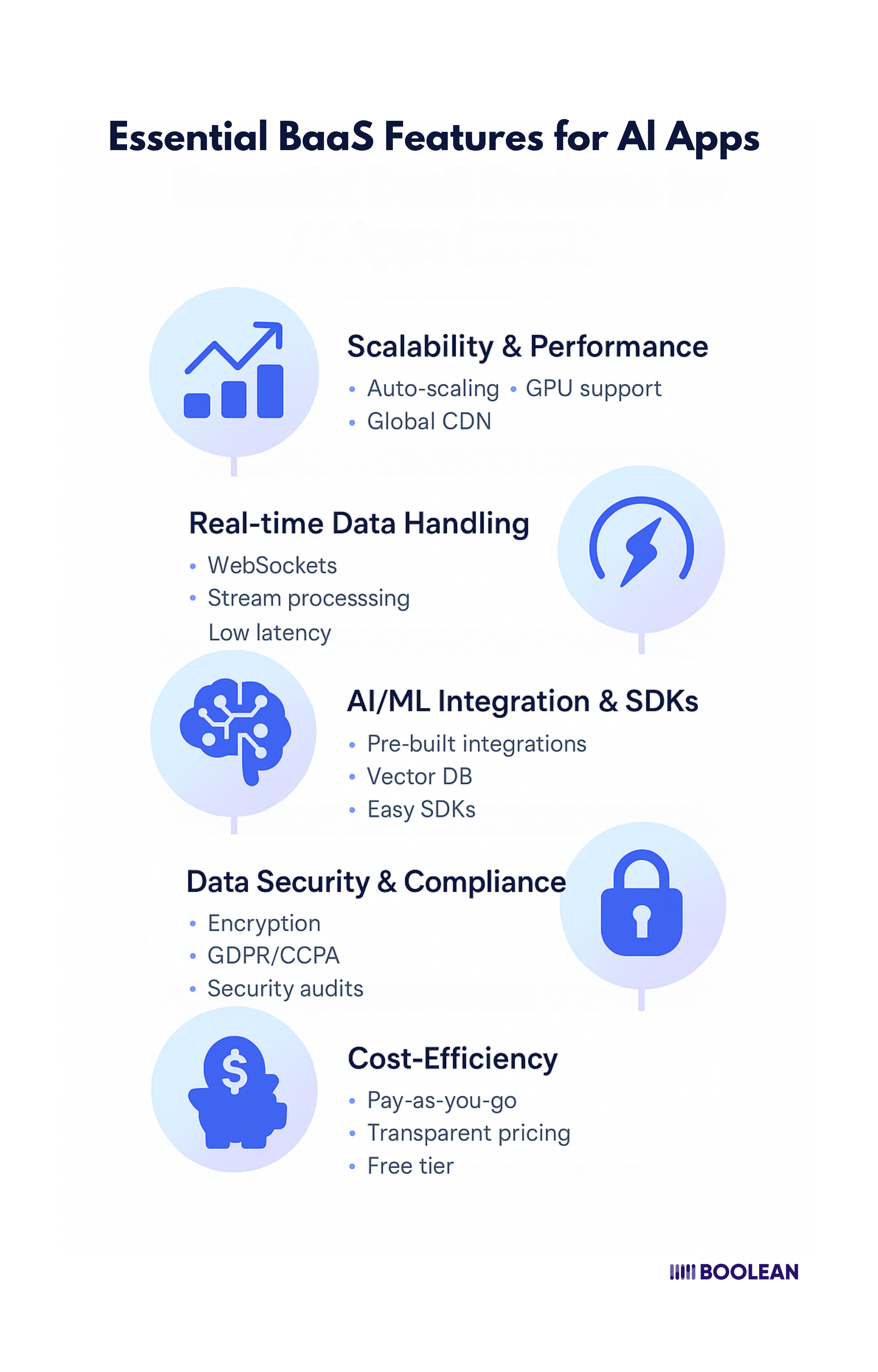
Okay, so you are convinced that BaaS is the way to go, very nice.
But wait, how do you choose right?
Every BaaS will not fit your AI-powered app. You need to know what really matters.
Here is a simple checklist to keep you on track:
- Scalability & Performance
When you receive your first 10,000 users, do you not want to crash your app?
Choose a hawk that can grow with you, with very great performance, even under heavy loads.
- Real-time Data Handling
AI apps often need real-time updates. Think AI chatbots, live dashboards, instant notifications.
Make sure your BaaS handles real-time data like a pro.
- AI/ML Integration & SDKs
Some BaaS platforms come with built-in AI tools or make it super easy to plug in your AI models.
If you’re building AI-driven features like TinyML, this is a lifesaver.
- Data Security & Compliance
You do not want to mess it up.
Look for strong safety features (encryption, access control) and ensure that they meet compliance standards (eg, GDPR, HIPAA) if necessary.
- Cost-Efficiency & Pay-as-you-Go Pricing
Let’s be honest, no one wants a surprise bill.
Look for BaaS providers that offer transparent, pay-as-you-go pricing with a decent free tier to start.
If a BaaS checks these boxes, you’re on the right track.
It’s not about picking the fanciest platform.
It’s about finding one that makes your life easier, today and when you scale.
Top BaaS Providers for AI-Powered Apps in 2025
So, you’re ready to pick a backend as a service (BaaS) for your AI-powered app. But here’s the catch: there are tons of options out there, and not all of them are a good fit for AI-heavy projects.
No worries. I’ve got you covered.
Here are some of the best BaaS platforms in 2025 that are beginner-friendly, AI-capable, and actually worth your time.
- Firebase (by Google)
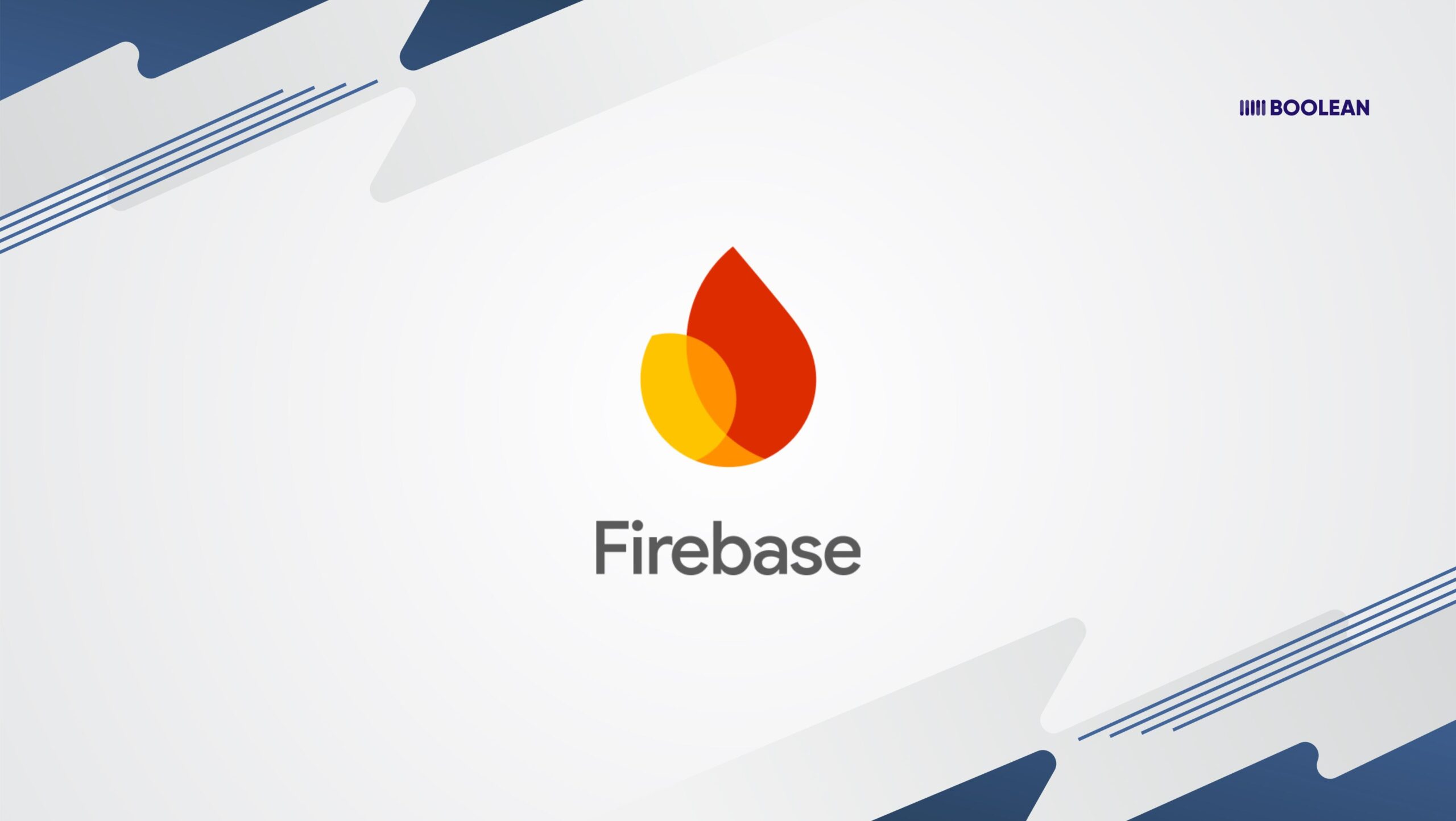
If you’re just starting out, Firebase feels like magic.
- Real-time database? Done.
- Authentication? Easy.
- Cloud Functions? Click and deploy.
But here is the sweet place: it integrates beautifully with Google’s AI/ML services such as Cloud Vision, automatic, and Dialogflow.
AI-powered chatbots or apps are perfect for the machine learning API on tap.
Best for: MVP, real-time apps, quick prototypes.
- AWS Amplify (Amazon Web Services)
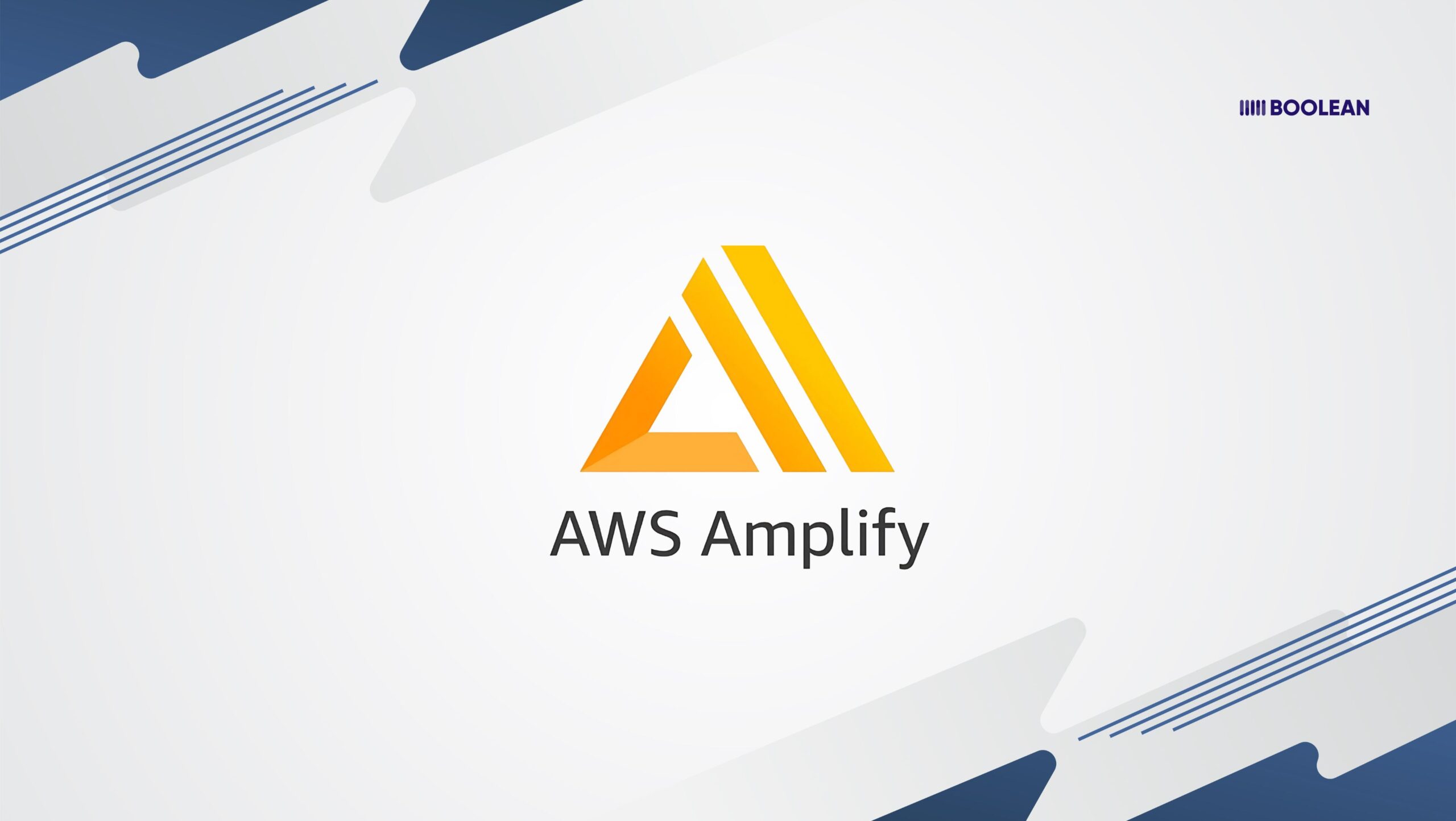
This one’s for you if you want a bit more muscle. Amplify gives you BaaS convenience but with AWS power under the hood.
You get scalable backends, GraphQL APIs, and most importantly, easy integration with AWS AI services like Amazon Rekognition (image analysis) or Lex (chatbots).
It’s slightly more complex than Firebase, but also more flexible when you scale up.
Best for: Scalable AI apps, production-level projects.
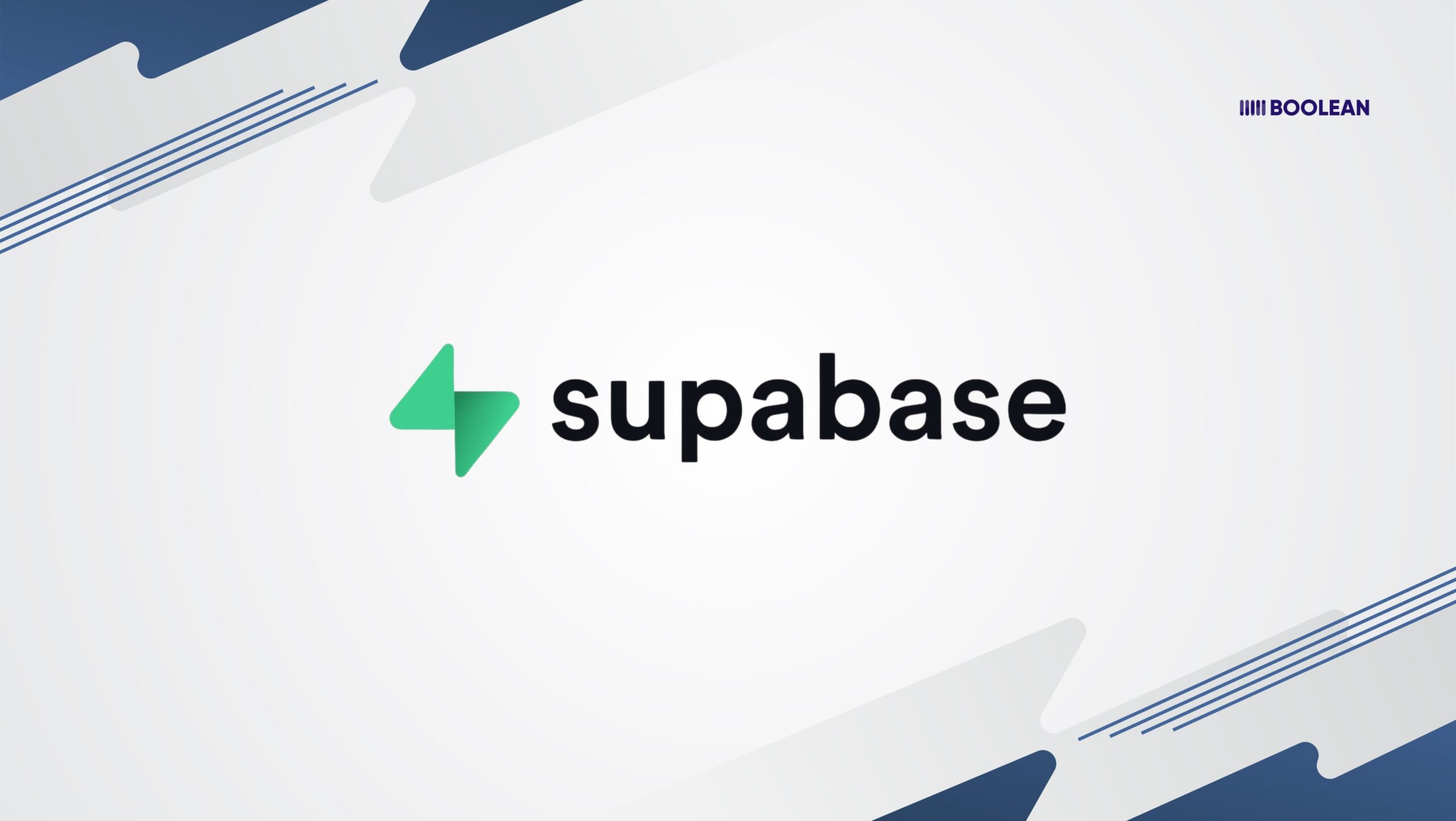
Think of Supabase as the open-source Firebase alternative.
It gives you a Postgres database, real-time subscriptions, authentication, and edge functions.
Although it does not have built-in AI services like Google or AWS, it is super flexible to connect with your own AI API or open-source AI model.
Best for: Developers who love open-source, require real-time data, and want control.
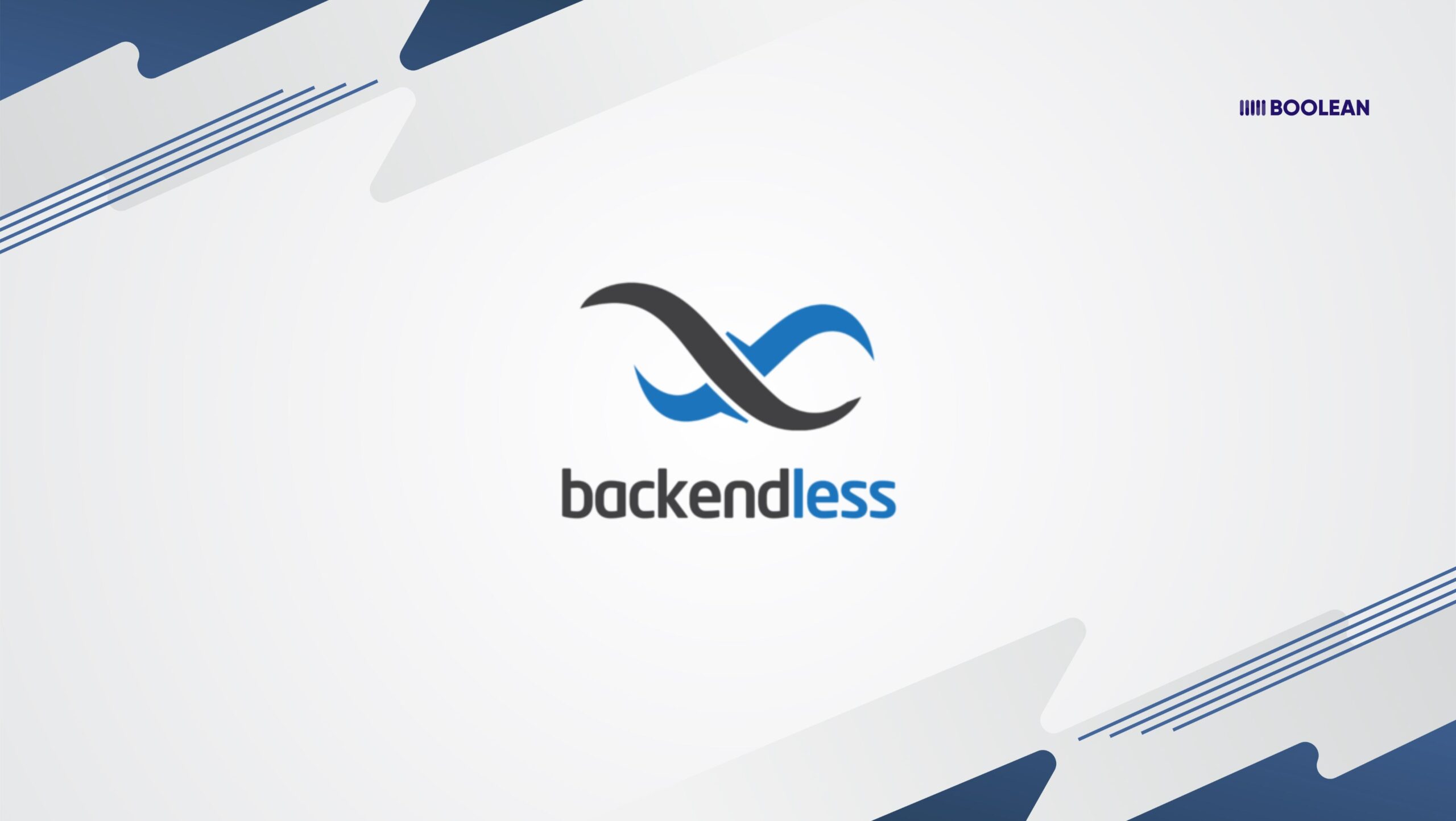
This platform is for folks who want a visual, no-code/low-code backend builder, but with serious power.
It offers everything from user management to real-time messaging, file storage, and even serverless timers.
AI integrations aren’t native but can be handled via custom APIs and cloud functions.
Best for: Non-developers or devs who want to move fast without deep coding.
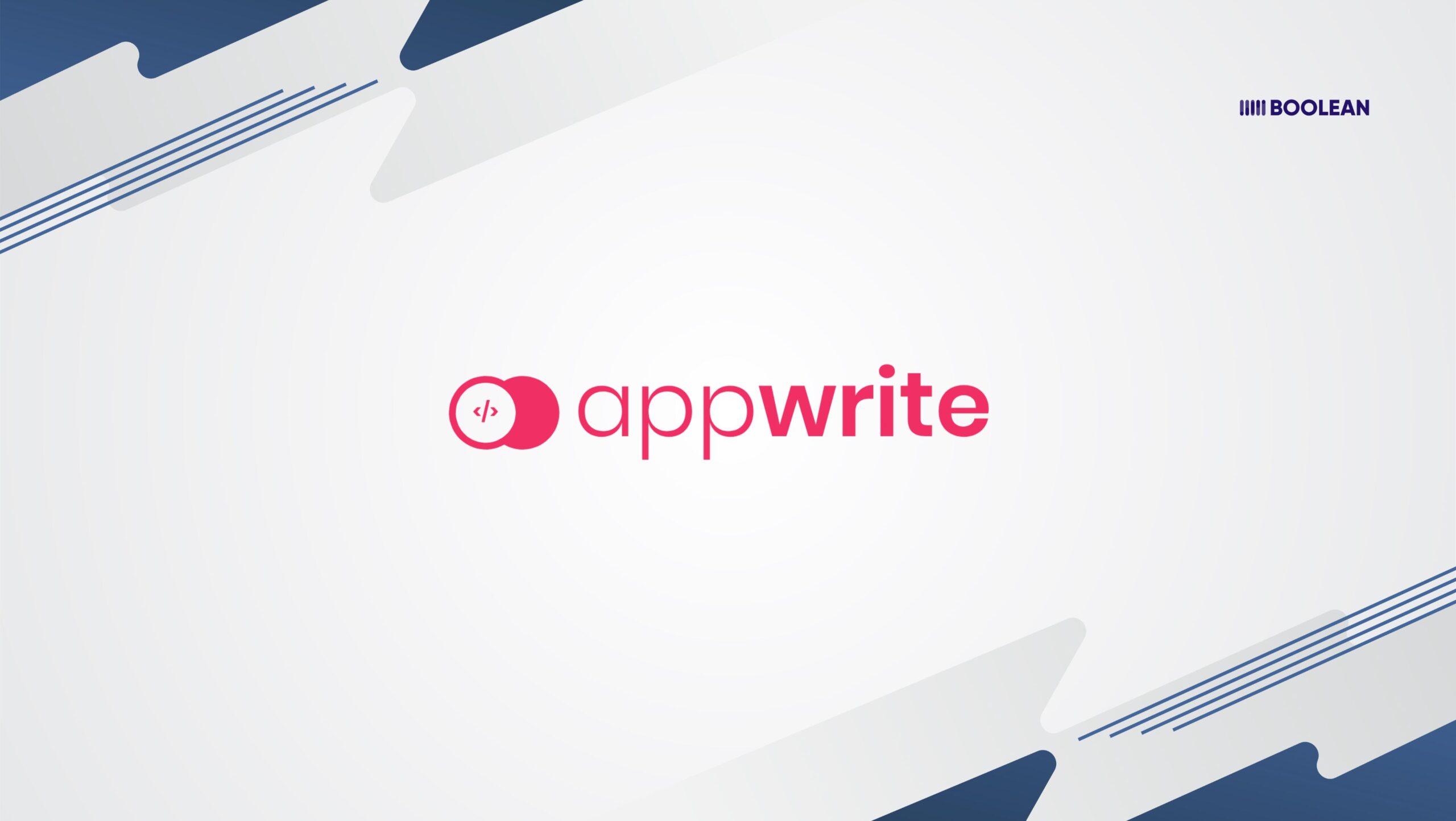
Another open-source gem. Appwrite focuses on developer experience with clean APIs and a modular setup.
It’s easy to extend with your own AI functions or external APIs. Although it is still holding the firebase in some areas, it is growing rapidly.
Best for: Developers who want an open-source freedom with a modern, clean backend setup.
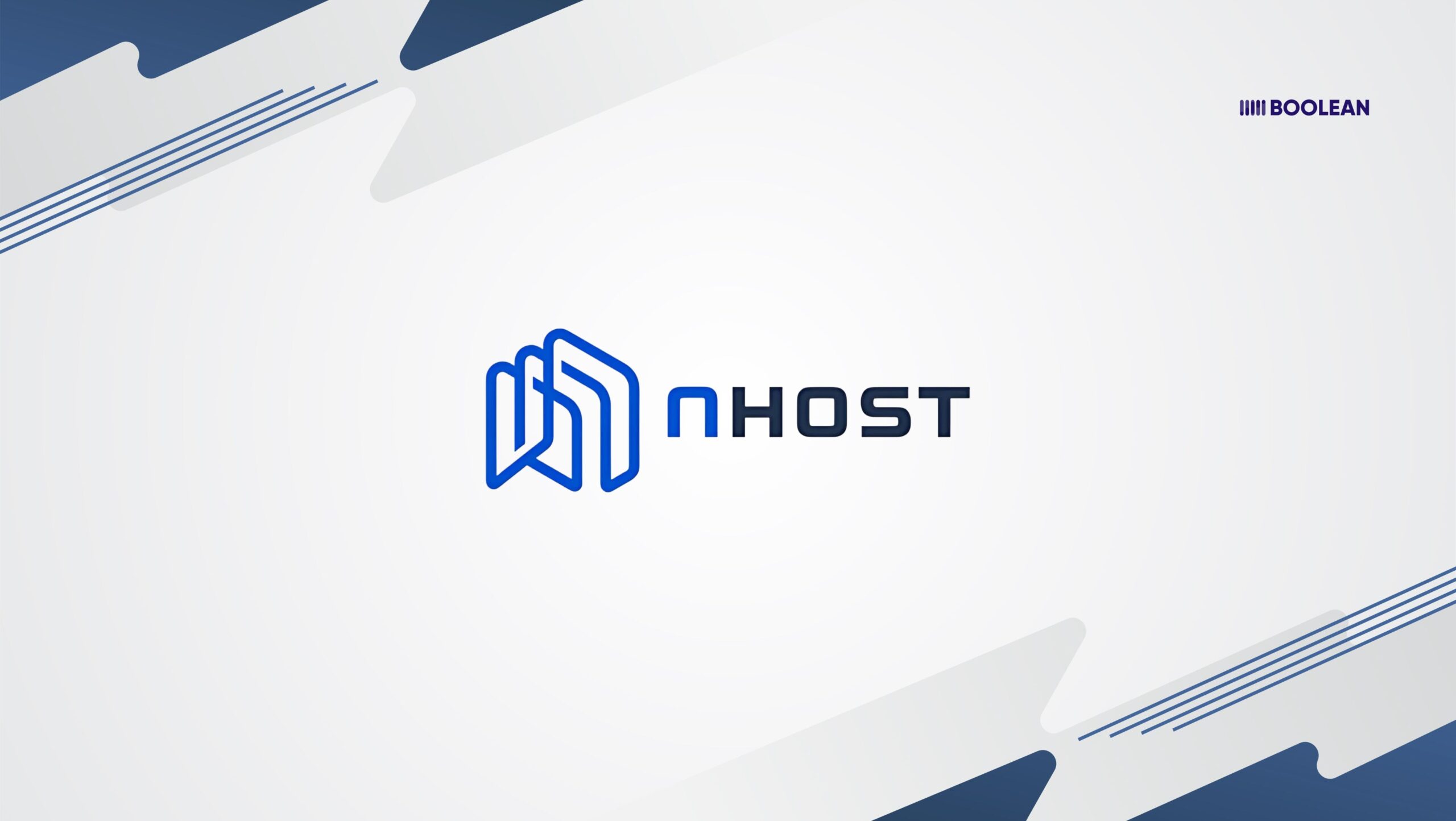
If you’re building a GraphQL-first app, Nhost is a strong contender.
It gives you a Postgres database, GraphQL API, authentication, and file storage, all out of the box.
AI/ML capabilities would need to be connected externally, but it’s a great choice for projects needing real-time GraphQL.
Best for: GraphQL fans, AI apps needing real-time data sync.
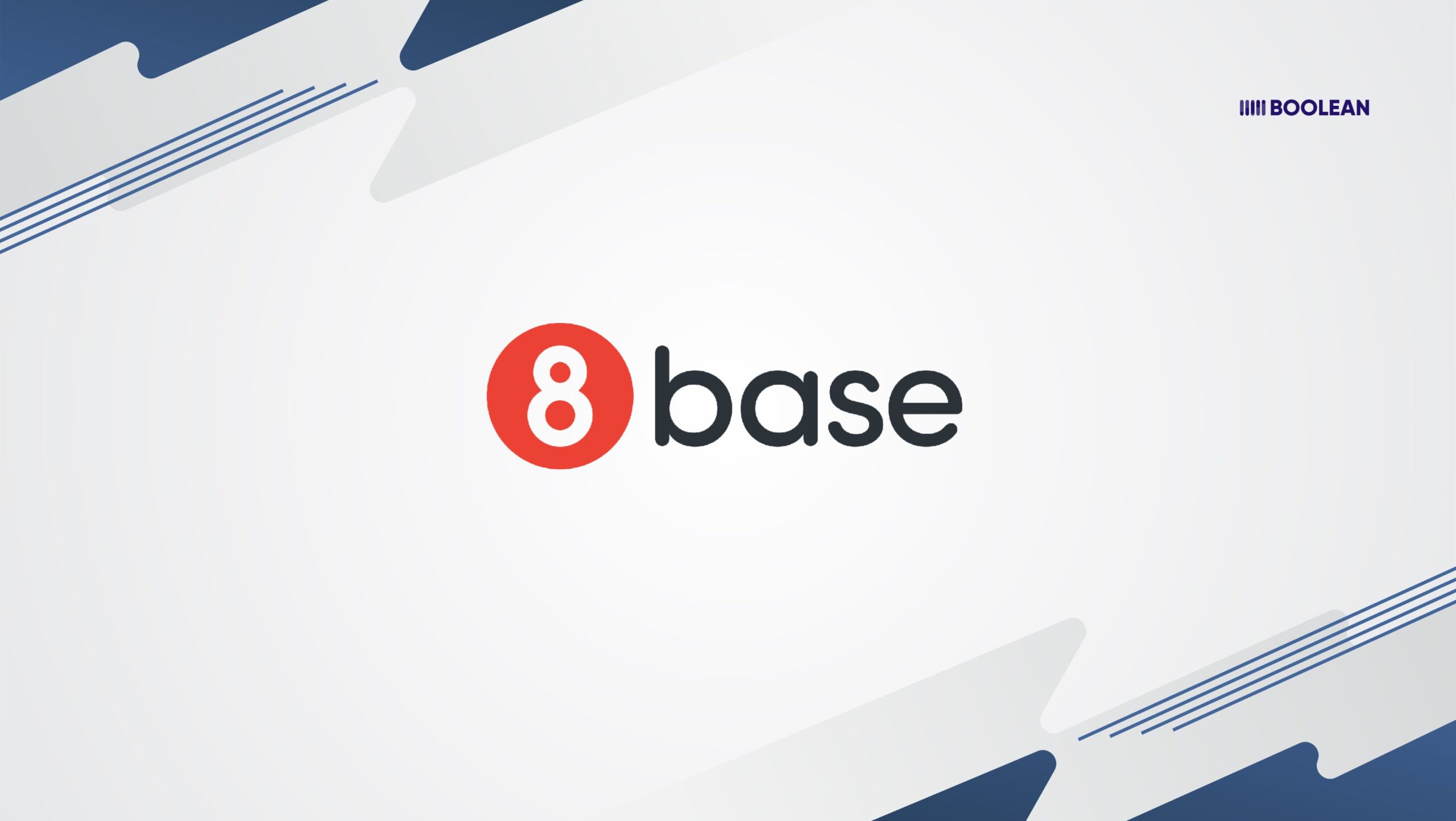
8base is a more enterprise-leaning BaaS with a focus on complex apps and automation.
It offers GraphQL APIs, workflow automation, and easy external service integrations, including AI models.
Pricing is a bit more premium, but it’s designed for serious apps.
Best for: Startup rapid scaling, AI apps require strong workflows.

Kuzzle is for real-time, event-driven apps.
It comes with hooks to integrate a real-time database, advanced discovery, geopolitical questions, and AI services.
Right, if your AI app is related to real-time analytics or IOT data.
Best for: Real-time edge AI in apps, IOT Projects.
- Parse Platform (Open-source option)
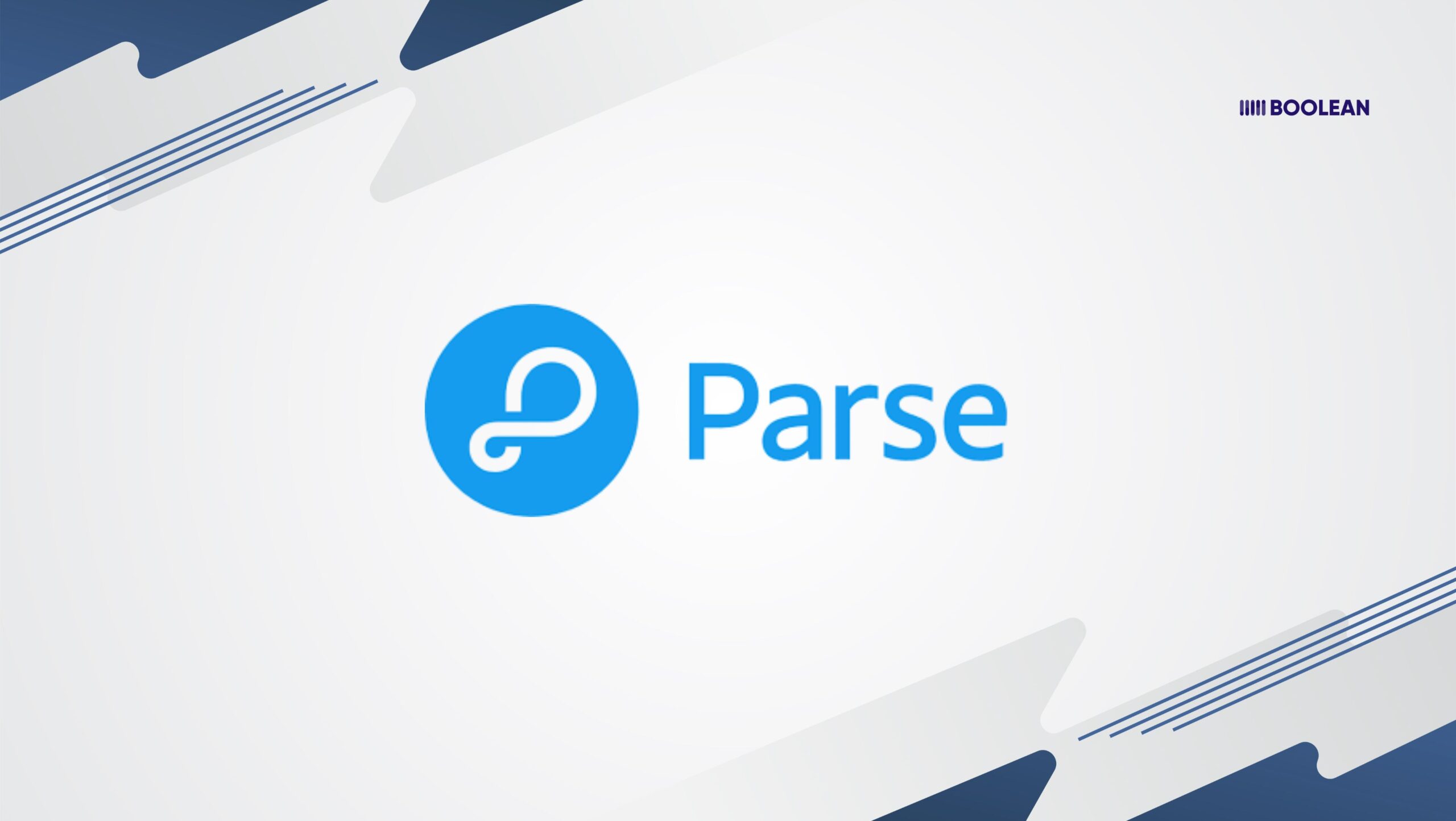
Parse has been around for a while and still holds up as a solid open-source BaaS option.
You’ll need to host it yourself, but it gives you control over your backend. AI integrations will be manual, but if you love tinkering, Parse is flexible.
Best for: Developers who want to do self-promotion and customize everything.
Quick Tip:
If you are a beginner or single developer, start with a Firebase or Superbase.
If you are aiming for severe AI integration and scalability, AWS Amplify can be a better fit.
Comparison Table: Features & Pricing Overview (2025)
Alright, let’s make this simple.
You’ve got the names. You know the vibes.
But now you’re probably wondering, “Which one fits MY project?”.
Let’s compare them.
| BaaS Platform | AI Integration | Real-Time Data | Ease of Use | Pricing Model | Best For |
|---|---|---|---|---|---|
| Firebase | Strong (Google AI/ML APIs) | Yes | Very Beginner-Friendly | Generous Free Tier + Pay-as-you-Go | MVPs, fast prototypes |
| AWS Amplify | Excellent (AWS AI/ML services) | Yes | Moderate (more features, more setup) | Pay-as-you-Go (can get pricey as you scale) | Scalable production apps |
| Supabase | Flexible (via external AI APIs) | Yes | Developer-Friendly (open-source lovers) | Free Tier + Usage-based | Open-source projects, indie devs |
| Backendless | Custom API integrations | Yes | No-Code / Low-Code UI | Free Tier + Usage-based | Non-developers, quick app builders |
| Appwrite | DIY AI integrations | Yes | Clean, Dev-focused | Open-Source (self-host) | Developers who love clean APIs |
| Nhost | External AI API connections | Yes (GraphQL-first) | Dev-friendly (GraphQL fans) | Free Tier + Usage-based | Real-time GraphQL apps |
| 8base | Strong (Enterprise AI/ML workflows) | Yes | Slightly Complex (enterprise-grade) | Premium Pricing | Startups, scaling AI products |
| Kuzzle | Custom AI service hooks | Yes (event-driven) | Technical setup | Open-Source / Enterprise Plans | Real-time analytics, IoT AI apps |
| Parse Platform | Manual AI integrations | Yes | Developer-Controlled (self-hosted) | Free (Self-hosted) | Tinkerers, full control devs |
Use Cases: When Should You Use BaaS for AI Apps?
Not sure if BaaS is right for your AI project? Let’s get specific.
Perfect for BaaS:
- MVP Development & Rapid Prototyping
You’ve got an AI idea. Maybe it’s brilliant. Maybe it’s not. You won’t know until real users try it.
BaaS lets you build and launch in days, not months. Test your concept without burning through funding on infrastructure.
- Startups & Solo Developers
Small team? Tiny budget? BaaS is your best friend. You get enterprise-grade infrastructure without hiring a backend team.
Focus your limited resources on perfecting the AI experience, not managing servers.
- AI-Powered Mobile Apps
Mobile apps with AI features are particularly suited for BaaS. Think about photo editors with AI filters, language learning apps with speech recognition, or fitness apps with computer vision.
BaaS handles heavy back-and-forth while keeping its app light.
- Chatbots & Conversational AI
Building a customer service bot? AI assistant? These need real-time responses, user management, and conversation history.
BaaS platforms offer these features out of the box. You just plug in your language model.
- Content Generation Tools
AI writing assistants, image generators, or video editors need robust file storage, user authentication, and API management.
BaaS provides all three, plus the scalability to handle viral growth.
When BaaS Might Not Be Ideal:
- Highly Specialized AI Workflows
If your AI pipeline requires custom hardware configurations or proprietary data processing, BaaS might be too restrictive.
Think medical imaging AI with specific compliance needs or financial AI with microsecond latency requirements.
- Large Enterprise Systems
Already have a massive tech team and existing infrastructure? The benefits of BaaS diminish. You might need custom solutions that integrate with legacy systems.
- Extreme Cost Sensitivity at Scale
Once you hit millions of daily active users, BaaS costs can add up. Some companies eventually migrate to custom backends. But that’s a good problem to have.
The Sweet Spot:
BaaS shines when you need to move fast and validate ideas. It’s perfect for the “build first, optimize later” approach that most successful AI apps follow.
Start with BaaS, prove your concept, then decide if you need custom infrastructure.
Remember: Even tech giants started somewhere. Instagram ran on a handful of servers. WhatsApp had a tiny team. BaaS lets you follow the same path: start small, think big, scale smart.
Limitations of BaaS for AI Apps (When to Consider Custom Backend)
Let’s be honest. BaaS isn’t always the answer.
Sometimes you need to build your own backend. Here’s when BaaS might hold you back:
- Vendor Lock-in Anxiety
Once you’re deep into a BaaS platform, switching is painful. Your entire app depends on their APIs. Their data structures. Their quirks. If they raise prices or shut down features, you’re stuck. Some developers lose sleep over this.
- Limited Customization
BaaS platforms are like apartment buildings. Great amenities, but you can’t knock down walls.
Need a specific database configuration for your AI model? Want to optimize data pipelines for your exact use case? Tough luck. You work within their constraints.
- Cost at Scale
Here’s the dirty secret: BaaS gets expensive when you succeed. That pay-as-you-go pricing looks great at 1,000 users. At 1 million? Your monthly bill might rival a developer’s salary.
Some companies hit a point where building custom becomes cheaper.
- Performance Bottlenecks
Your AI might need microsecond response times. Or specialized GPU configurations. Or custom caching strategies.
BaaS platforms optimize for the general case, not your specific needs. When milliseconds matter, generic solutions fall short.
- Complex AI Workflows
Some AI apps aren’t simple. Maybe you’re processing medical images through multiple models. Or running financial predictions with strict regulatory requirements.
BaaS platforms struggle with complex, multi-step AI pipelines.
- Data Residency & Compliance
Operating in healthcare? Finance? Government? Your data might need to stay in specific locations. Or follow strict processing rules.
Many BaaS platforms can’t guarantee the level of control regulators demand.
When Custom Makes Sense:
Consider custom backends when you have:
- A proven product with significant revenue.
- Specific performance requirements that BaaS can’t meet.
- Complex compliance or security needs.
- A technical team is ready to manage the infrastructure.
- Budget for long-term infrastructure investment.
The Reality Check:
Most AI apps don’t need custom backends on day one. Or even year one. The limitations above affect maybe 10% of projects. For the other 90%? BaaS remains the smart choice.
Start with BaaS. Validate your idea. Grow your user base. If you hit these limitations, it means you’ve succeeded. Then you can afford to migrate.
Building custom infrastructure too early is like buying a warehouse for your garage startup. Sure, you might need it someday. But not today.
The best path? Use BaaS until it genuinely constrains your growth. Then, and only then, consider the custom route. Your future self (and your bank account) will thank you.
Partner with Boolean Inc.: Build Smarter, Scale Faster
Building an AI app shouldn’t feel like climbing Mount Everest alone.
That’s where Boolean Inc. comes in. We’ve helped dozens of AI startups go from idea to launch in weeks, not months.
Our team understands the unique challenges of AI-powered applications, from choosing the right BaaS platform to optimizing your AI workflows.
Here’s what we bring to the table:
- BaaS Selection & Implementation: Overwhelmed by options? We’ll analyze your AI app’s needs and match you with the perfect BaaS platform. No guesswork. No expensive mistakes.
- AI Architecture Design: We design backend architectures that actually scale with your AI workloads. Real-time inference? Vector databases? We’ve done it all.
- Rapid MVP Development: Get your AI app in users’ hands fast. We use proven BaaS platforms to build your MVP in weeks, letting you validate ideas before a major investment.
- Cost Optimization: We’ve learned the hard way how AI apps can blow through budgets. Our strategies keep your BaaS costs predictable as you scale.
Whether you’re a solo founder with a breakthrough AI idea or a startup ready to scale, we speak your language. We’ve been in your shoes. We know what works.
Are you ready to turn your AI vision into reality? Let’s build something amazing together.
Conclusion
Backend-as-a-Service (BaaS) is a game-changer for AI app development. This saves you time, reduces complexity, and lets you focus on what really matters-smart, user-centric features.
But remember, there is no one-size-fits-all. Choose a BaaS that matches the scale of your project, AI needs, and budget.
And if you ever feel stuck or want to move fast, you can get that extra edge with experts like Boolian Inc.
Build smart. Launch fast. Scale without limits. 🚀
FAQs
- Is BaaS good for AI-powered apps?
Yes! BaaS platforms simplify backend management and make it easier to integrate AI services, especially for startups and small teams.
- Which BaaS is best for AI beginners?
Firebase and Supabase are great beginner-friendly options with easy-to-use tools and AI integrations.
- Can I scale my AI app with BaaS?
Absolutely. Most BaaS platforms offer scalable infrastructure, but for very large-scale apps, you may need a custom backend later on.
- Does BaaS handle AI model hosting?
Not directly. BaaS simplifies backend services, but AI models are usually integrated via external APIs or cloud AI services (like Google AI or AWS AI).
- When should I avoid using BaaS?
If your app needs heavy custom backend logic, advanced AI processing on servers, or strict data compliance, a custom backend is a better fit.







